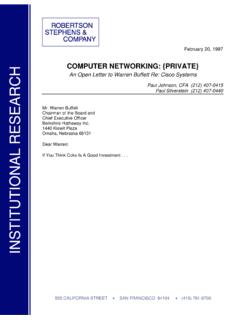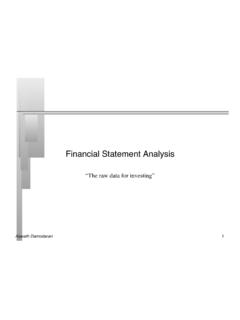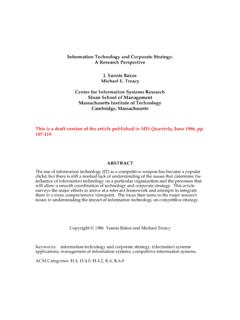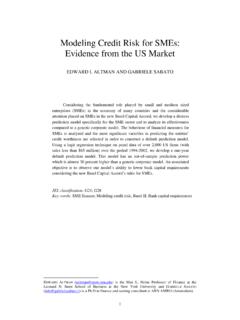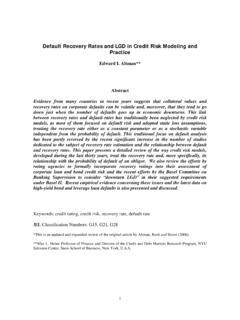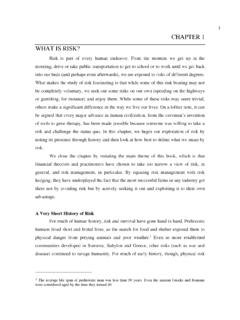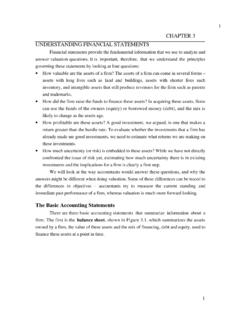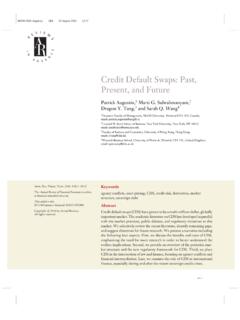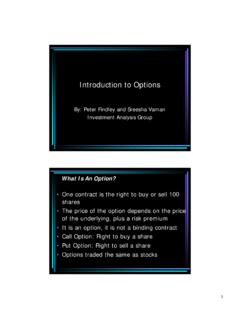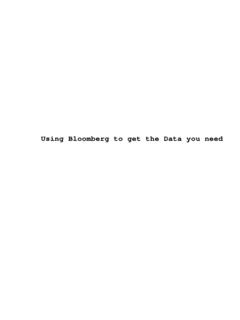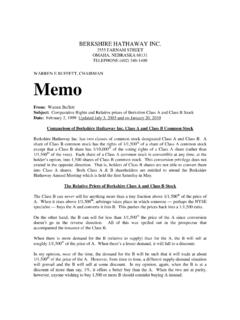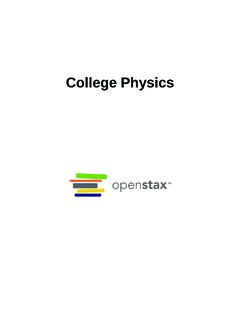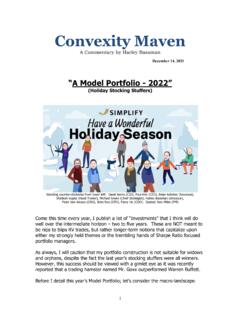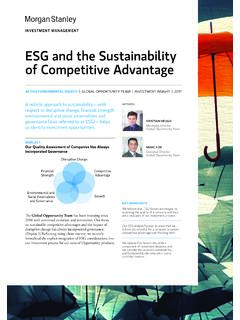Transcription of Risk free Rates in January 2020 - New York University
1 106. Croatian Kuna Bulgarian Lev Swiss Franc Japanese Yen Euro Danish Krone Thai Baht Aswath Damodaran Vietnamese Dong Swedish Krona Taiwanese $. Israeli Shekel Hungarian Forint British Pound Czech Koruna HK $. Korean Won Australian $. Norwegian Krone Polish Zloty NZ $. Canadian $. Singapore $. Default Spread based on rating US $. Qatari Dinar Malyasian Ringgit Iceland Krona Romanian Lev Risk free Rate Chinese Yuan Chilean Peso Phillipine Peso Risk free Rates in January 2020. Russian Ruble Brazilian Reai Colombian Peso Peruvian Sol Indian Rupee Indonesian Rupiah Risk free Rates by Currency in January 2020: Government Bond Based Estimate Pakistani Rupee Mexican Peso Nigerian Naira South African Rand Kenyan Shilling Turkish Lira Zambian kwacha 106. Measurement of the equity risk premium 107. The equity risk premium is the premium that investors demand for investing in an average risk investment, relative to the riskfree rate.
2 As a general proposition, this premium should be greater than zero increase with the risk aversion of the investors in that market increase with the riskiness of the average risk investment Aswath Damodaran 107. What is your risk premium? Assume that stocks are the only risky assets and that you are offered two investment options: a riskless investment (say a Government Security), on which you can make 3%. a mutual fund of all stocks, on which the returns are uncertain How much of an expected return would you demand to shift your money from the riskless asset to the mutual fund? a. Less than 3%. b. Between 3% - 5%. c. Between 5% - 7%. d. Between 7% -9%. e. Between 9%- 11%. f. More than 11%. Aswath Damodaran 108. Risk Aversion and Risk Premiums 109. If this were the entire market, the risk premium would be a weighted average of the risk premiums demanded by each and every investor.
3 The weights will be determined by the wealth that each investor brings to the market. Thus, warren buffett 's risk aversion counts more towards determining the equilibrium premium than yours'. and mine. As investors become more risk averse, you would expect the equilibrium premium to increase. Aswath Damodaran 109. Risk Premiums do 110. Go back to the previous example. Assume now that you are making the same choice but that you are making it in the aftermath of a stock market crash (it has dropped 25% in the last month). Would you change your answer? a. I would demand a larger premium b. I would demand a smaller premium c. I would demand the same premium Aswath Damodaran 110. Estimating Risk Premiums in Practice 111. Survey investors on their desired risk premiums and use the average premium from these surveys.
4 Assume that the actual premium delivered over long time periods is equal to the expected premium - , use historical data Estimate the implied premium in today's asset prices. Aswath Damodaran 111. 1. The Survey Approach 112. Surveying all investors in a market place is impractical. However, you can survey a few individuals and use these results. In practice, this translates into surveys of the following: The limitations of this approach are: There are no constraints on reasonability (the survey could produce negative risk premiums or risk premiums of 50%). The survey results are more reflective of the past than the future. They tend to be short term; even the longest surveys do not go beyond one year. Aswath Damodaran 112. 2. The Historical Premium Approach 113. This is the default approach used by most to arrive at the premium to use in the model In most cases, this approach does the following Defines a time period for the estimation (1928-Present, last 50 ).
5 Calculates average returns on a stock index during the period Calculates average returns on a riskless security over the period Calculates the difference between the two averages and uses it as a premium looking forward. The limitations of this approach are: it assumes that the risk aversion of investors has not changed in a systematic way across time. (The risk aversion may change from year to year, but it reverts back to historical averages). it assumes that the riskiness of the risky portfolio (stock index) has not changed in a systematic way across time. Aswath Damodaran 113. Historical ERP: A Historical Snapshot Arithmetic Average Geometric Average Stocks - T. Bills Stocks - T. Bonds Stocks - T. Bills Stocks - T. Bonds 1928-2019 Historical Std Error premium for 1970-2019 the US. Std Error 2010-2019 Std Error If you are going to use a historical risk premium, make it Long term (because of the standard error).
6 Consistent with your choice of risk free rate A compounded average No matter which estimate you use, recognize that it is backward looking, is noisy and may reflect selection bias. 114. 3. A Forward Looking ERP. 115. For a start: If you know the price paid for an asset and have estimates of the expected cash flows on the asset, you can estimate the IRR of these cash flows. If you paid the price, this is your expected return. Stock Price & Risk: If you assume that stocks are correctly priced in the aggregate and you can estimate the expected cashflows from buying stocks, you can estimate the expected rate of return on stocks by finding that discount rate that makes the present value equal to the price paid. Implied ERP: Subtracting out the riskfree rate should yield an implied equity risk premium. This implied equity premium is a forward-looking number and can be updated as often as you want.
7 Aswath Damodaran 115. Implied ERP in November 2013: Watch what I pay, not what I If you can observe what investors are willing to pay for stocks, you can back out an expected return from that price and an implied equity risk premium. Base year cash flow (last 12 mths). Dividends (TTM): Expected growth in next 5 years + Buybacks (TTM): Top down analyst estimate of = Cash to investors (TTM): earnings growth for S&P 500 with Earnings in TTM: stable payout: Beyond year 5. E(Cash to investors) Expected growth rate =. Riskfree rate = S&P 500 on 11/1/13= Expected CF in year 6 =. ( ). = + + + + +. (1+ r) (1+ r) (1+ r) (1+ r) (1+ r) (r .0255)(1+ r)5. 2 3 4 5. r = Implied Expected Return on Stocks = Minus Risk free rate = rate on 1/1/14= Equals Aswath Damodaran Implied Equity Risk Premium (1/1/14) = - = 116. The bottom line on Equity Risk Premiums in November 2013.
8 Mature Markets: In November 2013, the number that we chose to use as the equity risk premium for all mature markets was This was set equal to the implied premium at that point in time and it was much higher than the historical risk premium of prevailing then (1928-2012 period). Arithmetic Average Geometric Average Stocks - T. Bills Stocks - T. Bonds Stocks - T. Bills Stocks - T. Bonds 1928-2012 1962-2012 2002-2012 For emerging markets, we will use the melded default spread approach (where default spreads are scaled up to reflect additional equity risk) to come up with the additional risk premium that we will add to the mature market premium. Thus, markets in countries with lower sovereign ratings will have higher risk premiums that ! $ Equity Emerging Market ERP = + Country Default Spread*## &&. " Country Bond %.
9 Aswath Damodaran 117. What about equity risk premiums for other markets? 118. Historical data for markets outside the United States is available for much shorter time periods. The problem is even greater in emerging markets. The historical premiums that emerge from this data reflects this data problem and there is much greater error associated with the estimates of the premiums. You could try to compute implied equity risk premiums but getting the inputs, especially for long term growth are difficult to do. Aswath Damodaran 118. One solution: Bond default spreads as CRP. November 2013. In November 2013, the equity risk premium for the US was Using the default spread on the sovereign bond or based upon the sovereign rating and adding that spread to the mature market premium ( for the US) gives you a total ERP for a country.
10 Country Rating Default Spread (Country Risk Premium) US ERP Total ERP for country India Baa3 China Aa3 Brazil Baa2 If you prefer CDS spreads: Country Sovereign CDS Spread US ERP Total ERP for country India China Brazil Aswath Damodaran 119. Beyond the default spread? Equities are riskier than bonds While default risk spreads and equity risk premiums are highly correlated, one would expect equity spreads to be higher than debt spreads. One approach to scaling up the premium is to look at the relative volatility of equities to bonds and to scale up the default spread to reflect this: Brazil: The annualized standard deviation in the Brazilian equity index over the previous year is 21 percent, whereas the annualized standard deviation in the Brazilian C-bond is 14 percent. Brazil's Equity Risk Premium = + (21%/14%) = Using the same approach for China and India: China's Equity Risk Premium = + (18%/10%) = India's Equity Risk Premium = + (24%/17%) = Aswath Damodaran 120.
